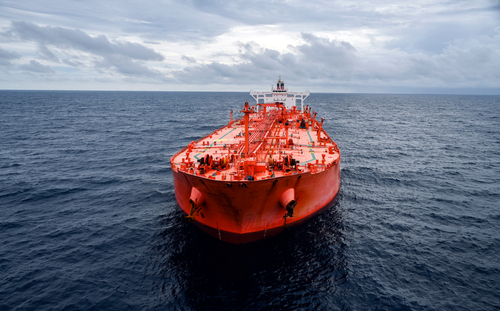Different ways of measuring trade: Where do our imports come from?

The end of the Brexit transition period, the post-pandemic recovery and the Russian invasion of Ukraine have all provoked heightened interest in the ONS trade figures, especially trade by country. While direct imports and exports between the UK and other countries are the most obvious data point, it’s often important to also know where goods have originated from.
With new figures looking at the impact of sanctions on the UK’s trade with Russia published this morning, in this post Hannah Donnarumma explains the different ways of looking at import figures, and the different perspectives they offer.
Our UK trade figures are produced on a country of dispatch basis in line with international best practice on the compilation of National Accounts, using customs declarations recorded by HM Revenue Customs. Country of dispatch refers to the country where the last commercial transaction took place. This is not necessarily the country of origin/manufacture or the last country from which the goods were shipped to the UK.
However, trade figures can also be produced on a country of origin basis. Country of origin refers to the country where the goods originated, that is, where they were produced or manufactured. For example, the Department for Business, Energy & Industrial Strategy also produces data on energy imports, this is largely collected using surveys of energy companies, and are produced on a country of origin basis in their publications including Energy trends and Digest of UK Energy Statistics.
These two accounting methods can cause some differences in the import statistics published by different sources. Below are examples of how this works in practice:
Example 1
- A business in the UK buys fuel from Russia. This fuel is transported to the UK via a port in the Netherlands.
- In this example, the country of origin (where the fuel was produced) is Russia, and the country of dispatch (where the last commercial transaction took place) is also Russia.
- This is because although the fuel was transported to the UK via a port in the Netherlands, no commercial transaction took place
- ONS statistics record this import as coming from Russia.
Example 2
- A business in the Netherlands buys fuel from Russia. This Dutch business then sells the fuel to the UK.
- In this example, the country of origin is Russia, and the country of dispatch was the Netherlands.
- This is because while the fuel originated in Russia, the last commercial transaction took place in the Netherlands.
- ONS statistics record this import as coming from the Netherlands.
How much impact does this have on import statistics?
This difference in accounting methods has gained more attention in recent months, following the Russian invasion of Ukraine and the subsequent implementation of economic sanctions.
While there are differences between import statistics based on country of origin and those based on country of dispatch, these tend to be minor and do not affect overall trends.
Does this impact sanctions on Russian fuel imports?
The UK Government announced in March 2022 that the UK would phase out Russian oil imports by the end of the year and this ban came into force on 5 December 2022. As such we expect the figures to fall to zero on both bases after the sanctions have come into effect.
The ban prevents the imports of all oil and oil products that have a Russian origin. It is important to note the two differing methods of statistical accounting are purely used for the compilation of statistics and have no bearing on how the sanctions are applied.

Hannah Donnarumma is Co-Head of Trade and Tourism Statistics at the Office for National Statistics